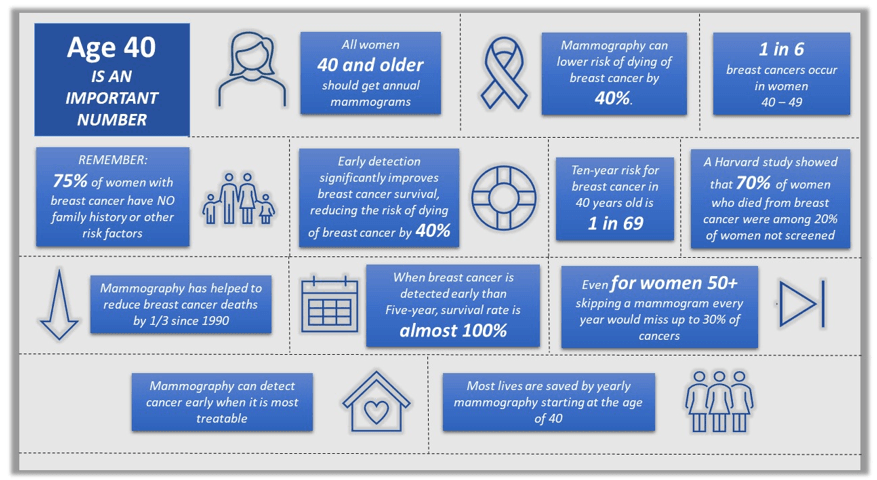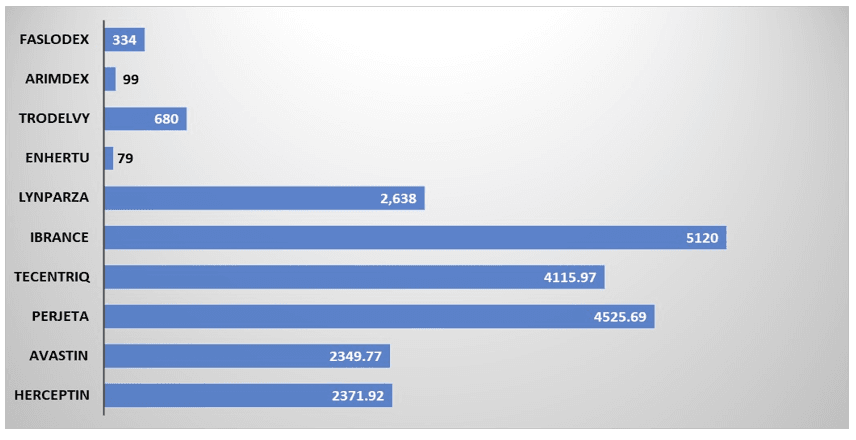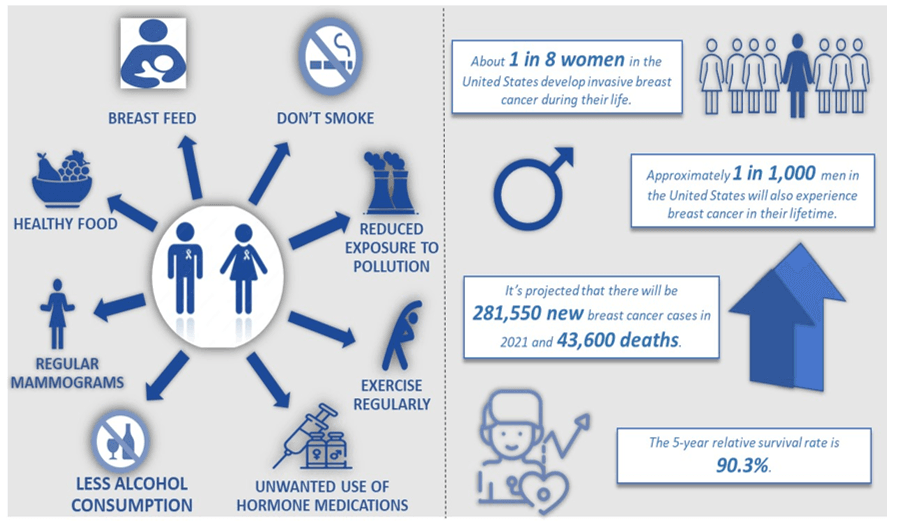- Home
- About Us
- Industry
- Services
- Reading
- Contact Us
Breast Cancer Treatments: A Roadmap to Support and Resources for Breast Cancer Patients
Author: Vikas Kumar
February 28, 2024
Breast cancer, the most common type of cancer in women, casts a long shadow. The growing incidence of breast cancer cases makes it a global concern. For instance, according to World Health Organization, in 2020, there were 2.3 million women diagnosed with breast cancer globally. As of the end of 2020, there were 7.8 million women alive who were diagnosed with breast cancer in the past 5 years, making it the world’s most prevalent cancer. With such staggering numbers, the demand for effective treatment options is undeniable. This article delves into the intricate world of breast cancer treatment, exploring its various facets, from cutting-edge advancements to cost considerations.
Unlock Insights: Receive a Sample Research Report on the Breast Cancer Treatment Market: https://univdatos.com/reports/breast-cancer-treatment-market?popup=report-enquiry
The fight against breast cancer is multifaceted, requiring a blend of surgical procedures, radiation therapy, and systemic therapies like chemotherapy, hormone therapy, and targeted therapy. The optimal treatment plan hinges on several factors, including the stage and type of cancer, the patient’s age and overall health, and individual preferences.
Figure: Breast Cancer Actualities

Surgery: The Scalpel’s Precision:
The surgeon’s scalpel remains a foundational tool in breast cancer treatment. Depending on the tumor’s stage and size, several surgical options exist:
- Lumpectomy: This minimally invasive procedure removes the tumor while preserving as much breast tissue as possible. Often followed by radiation therapy, it’s preferred for early-stage, small tumors.
- Mastectomy: This involves removing the entire breast, sometimes including surrounding lymph nodes, for larger or more aggressive tumors. Reconstruction surgery can offer cosmetic restoration after mastectomy.
- Sentinel lymph node biopsy: This identifies whether cancer has spread to the lymph nodes, guiding further treatment decisions.
Radiation Therapy: Harnessing the Power of Rays:
High-energy beams target cancer cells, shrinking tumors and eliminating any microscopic remnants after surgery. Radiation therapy can be external, delivered through a machine, or internally, using brachytherapy implants placed directly in the breast tissue. In the United States, it is the most common cancer (excluding skin cancer) among women. Approximately 250,000 cases of invasive breast cancer are diagnosed each year, with about 40,000 breast cancer deaths in 2022. Radiation Therapy is one of the best options for the treatment of Breast cancer when detected early has a 95% success rate.
Chemotherapy: A Chemical Offensive:
Powerful drugs delivered intravenously or orally attack rapidly dividing cancer cells throughout the body. Chemotherapy regimens vary depending on the cancer type and stage, often administered in cycles with periods of rest to manage side effects. Chemotherapy is a common treatment for secondary breast cancer. It can help control or shrink cancer and relieve symptoms. For some people, treatment can control the cancer for many months or years.
Figure: Top Breast Cancer Drug Sales’2022 (USD Million)

Beyond the Familiar: Embracing the New Horizon:
The landscape of breast cancer treatment is constantly evolving, with exciting advancements offering personalized and targeted approaches:
Immunotherapy: This harnesses the body’s immune system to recognize and attack cancer cells. Drugs like pembrolizumab and atezolizumab are revolutionizing treatment for specific types of breast cancer.
Personalized medicine: Genetic testing can identify mutations within tumors, paving the way for targeted therapies like HER2 inhibitors (trastuzumab, pertuzumab) for HER2-positive cancers.
Clinical trials: These ongoing research studies offer access to cutting-edge treatment options for patients who may not benefit from standard therapies.
Personalized medicine for breast cancer
Clinical trials: These ongoing research studies offer access to cutting-edge treatment options for patients who may not benefit from standard therapies.
Supportive Care: A Gentle Hand in the Storm:
The side effects of cancer treatment, like fatigue, nausea, hair loss, and emotional distress, can be debilitating. Supportive care plays a vital role in managing these challenges, encompassing aspects like:
- Palliative care: Focuses on symptom management and improving quality of life, regardless of treatment stage.
- Psychological counseling: Supports emotional well-being and helps navigate the anxieties and stresses associated with cancer.
- Nutrition guidance: Ensures adequate nourishment throughout treatment to maintain strength and energy levels.
Figure: Breast Cancer Prevention and Scenario in the United States

Explore the Comprehensive Research Overview, Including a Table of Contents, on the Breast Cancer Treatment Market: https://univdatos.com/reports/breast-cancer-treatment-market
Building Bridges of Support:
No one should face the battle against breast cancer alone. Numerous resources and organizations offer invaluable support to patients and their families:
- The National Cancer Institute: Provides comprehensive information and resources on breast cancer diagnosis, treatment, and survivorship.
- The American Cancer Society: Offers emotional support groups, financial assistance programs, and patient navigation services.
- The Susan G. Komen Foundation: Funds research, advocates for access to care, and supports breast cancer awareness programs.
Conclusion:
Breast cancer, though a formidable foe, is not invincible. Advances in surgery, radiation therapy, and systemic therapies, coupled with personalized medicine and immunotherapy, offer increasing hope for better outcomes. But the journey requires more than just potent weapons; the gentle hand of supportive care and the strength of a supportive community are equally crucial. By forging strong partnerships between patients, physicians, researchers, and support organizations, we can continue to push the boundaries of treatment and pave the way for a future where the pink ribbon represents not just awareness, but also victory over this relentless adversary.
Get a Callback
